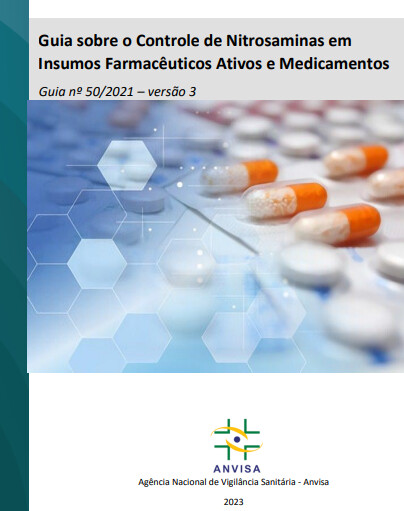English:
I am thrilled to share some excellent news with you all: ANVISA has just published Version 3 of the Guide on Nitrosamine Control. This update holds significant importance for the pharmaceutical industry and all stakeholders involved in medication production, as nitrosamines have been raising increasing concerns.
It is essential to underscore the significance of this guide, as nitrosamines have garnered attention worldwide. ANVISA’s publication demonstrates the regulatory agency’s commitment to keeping up with scientific and regulatory advancements, guaranteeing the safety and quality of medications available in the Brazilian market.
The guide is in the Portuguese language.
Português:
É com grande satisfação que compartilho uma excelente novidade: a ANVISA acaba de lançar a versão 3 do “Guia sobre o Controle de Nitrosaminas em Insumos Farmacêuticos Ativos e Medicamentos.”
Essa atualização é de extrema importância para a indústria farmacêutica e todos os envolvidos na produção de medicamentos, uma vez que as nitrosaminas têm sido objeto de crescente preocupação.
-
O guia traz diversas atualizações relevantes, sendo uma delas a tabela ampliada com limites para nitrosaminas. Essa tabela é um recurso valioso para garantir a segurança dos medicamentos e auxiliar as empresas na identificação e controle dessas substâncias potencialmente nocivas. Com os limites estabelecidos, é possível implementar medidas preventivas e assegurar a qualidade dos produtos farmacêuticos.
-
Outro destaque importante é o código de assunto 12194 (Avaliação de segurança para nitrosaminas). Esse canal permitirá às empresas reportarem a identificação de novas nitrosaminas e solicitar a definição de limites específicos por meio de protocolo no sistema Solicita.
Essa iniciativa fortalece a cooperação entre a indústria e a ANVISA, agilizando o processo de avaliação e garantindo uma resposta adequada às novas descobertas.
É essencial ressaltar a relevância desse guia, pois as nitrosaminas têm sido objeto de atenção em todo o mundo.
A publicação da ANVISA demonstra o compromisso do órgão regulador em acompanhar as evoluções científicas e regulatórias, garantindo a segurança e a qualidade dos medicamentos disponíveis no mercado brasileiro.
Como profissionais da área, devemos estar atentos a essas atualizações e utilizar o guia como uma ferramenta essencial em nossas atividades. A conscientização sobre as nitrosaminas e a adoção de medidas preventivas são fundamentais para proteger a saúde dos pacientes e manter a confiança na indústria farmacêutica.
Parabenizo a ANVISA por mais essa iniciativa importante e agradeço a todos os envolvidos na elaboração e atualização desse guia.
Vamos continuar trabalhando juntos para promover a segurança e a qualidade dos medicamentos no Brasil.
Para mais detalhes e acesso ao guia:
